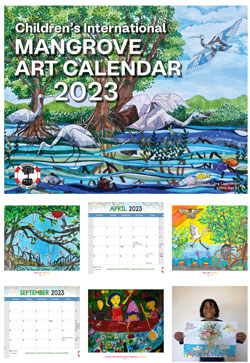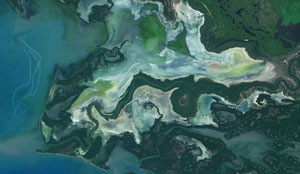MAP News Issue #569 – April 8, 2023
The MAP News | |
Sea Grant Blue Carbon Law Symposium May 17-18, 2023 in Athens, GAFEATURE STORYCoastal Lagoon Education program launched 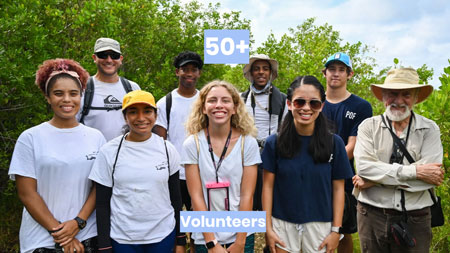 CAYMAN ISLANDS – Coastal Lagoon Education Project announced its new website which provides educational resources, recording observations and connection with the community. Raising awareness of the key issues Coastal Lagoons are facing both locally and around the world is vital to the ongoing mission of environmental preservation and protection. CSL firmly believes that they need to work together to make positive changes to behaviour and practices to ensure future generations can benefit and enjoy natural habitats such as coastal lagoons. Introducing students, teachers, parents and their communities to the wonderful world of the tropical lagoon coastline through a curriculum-based, hands-on science program. Linking exciting and fun-filled ecological exploration with a deep understanding of the importance and intricacies of this wonderful ecosystem throughout the Caribbean and world-wide. The Coastal Lagoon ecosystem comprises three uniquely interdependent ecosystems – mangroves, seagrass and coral reefs. While each individual system is specifically biodiverse they are all interrelated, sharing and depending on a series of unique forms of flora and fauna. The education program emphasises this connectivity. CAYMAN ISLANDS – Coastal Lagoon Education Project announced its new website which provides educational resources, recording observations and connection with the community. Raising awareness of the key issues Coastal Lagoons are facing both locally and around the world is vital to the ongoing mission of environmental preservation and protection. CSL firmly believes that they need to work together to make positive changes to behaviour and practices to ensure future generations can benefit and enjoy natural habitats such as coastal lagoons. Introducing students, teachers, parents and their communities to the wonderful world of the tropical lagoon coastline through a curriculum-based, hands-on science program. Linking exciting and fun-filled ecological exploration with a deep understanding of the importance and intricacies of this wonderful ecosystem throughout the Caribbean and world-wide. The Coastal Lagoon ecosystem comprises three uniquely interdependent ecosystems – mangroves, seagrass and coral reefs. While each individual system is specifically biodiverse they are all interrelated, sharing and depending on a series of unique forms of flora and fauna. The education program emphasises this connectivity.GLOBAL Oceanographic connectivity explains the intra-specific diversity of mangrove forests at global scales AFRICA Ocean rim states liaise over conservation of mangroves
Libreville’s shrinking mangroves leave Gabon’s capital prone to floods 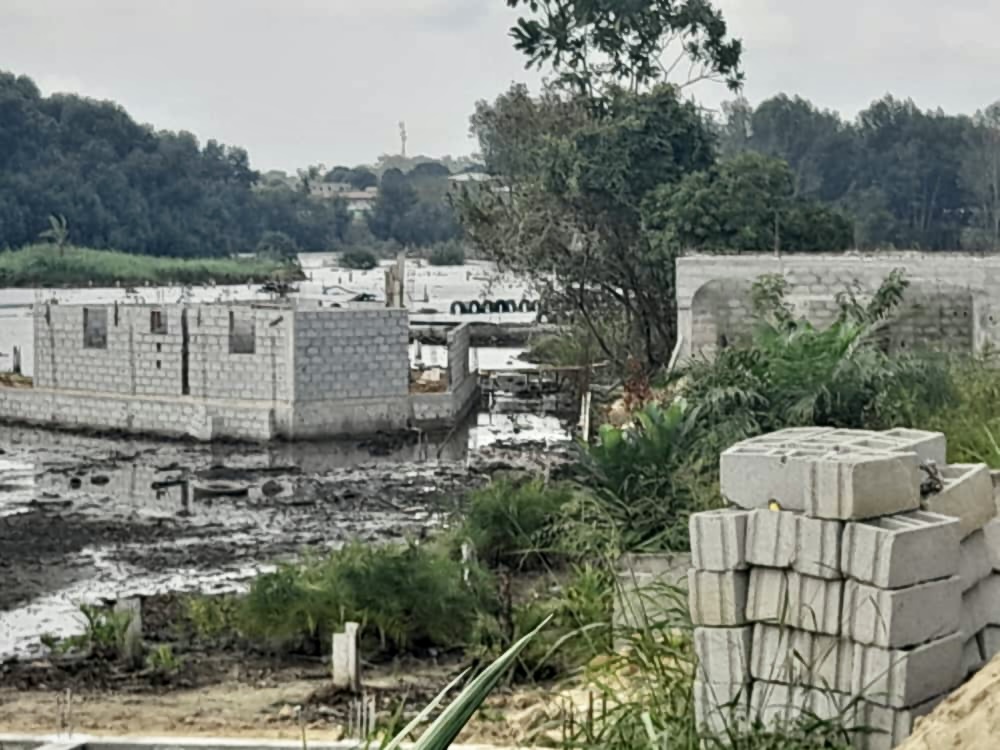 GABON – In 2021, Gabon’s space research agency, AGEOS, concluded that the country’s capital, Libreville, had lost nearly 70 hectares (170 acres) of mangroves in three years. That’s an area about a fifth the size of New York City’s Central Park, which “is not much,” says Alfred Ngomanda, commissioner of the National Centre for Scientific and Technological Research of Gabon (CENAREST). “The surface area of mangroves in Gabon is much larger than that,” he tells Mongabay. “We have a deforestation rate that is not even 1%.” But while this may be a negligible amount at the national level, on the scale of Libreville, which has 1,883 hectares (4,653 acres) of mangroves, this represents 3.55% — which is worrying, says Magloire Désiré Mounganga, a former scientific coordinator at the ANPN, Gabon’s national parks agency. “There are several things that threaten it,” he says. “First of all, there is erosion, i.e. the rise of the sea, but when I go out into the field I also see urban pressure. It is such that the mangrove ecosystem which is in the urban periphery, unfortunately, is destined to be regularly damaged, if not completely destroyed.” GABON – In 2021, Gabon’s space research agency, AGEOS, concluded that the country’s capital, Libreville, had lost nearly 70 hectares (170 acres) of mangroves in three years. That’s an area about a fifth the size of New York City’s Central Park, which “is not much,” says Alfred Ngomanda, commissioner of the National Centre for Scientific and Technological Research of Gabon (CENAREST). “The surface area of mangroves in Gabon is much larger than that,” he tells Mongabay. “We have a deforestation rate that is not even 1%.” But while this may be a negligible amount at the national level, on the scale of Libreville, which has 1,883 hectares (4,653 acres) of mangroves, this represents 3.55% — which is worrying, says Magloire Désiré Mounganga, a former scientific coordinator at the ANPN, Gabon’s national parks agency. “There are several things that threaten it,” he says. “First of all, there is erosion, i.e. the rise of the sea, but when I go out into the field I also see urban pressure. It is such that the mangrove ecosystem which is in the urban periphery, unfortunately, is destined to be regularly damaged, if not completely destroyed.”
AMERICASThe Nature Conservancy Identifies Sites for Mangrove Insurance Pilot Projects in The Bahamas, Florida, and Mexico Sea Grant Blue Carbon Law Symposium 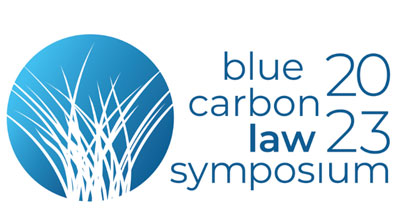 USA – The first Sea Grant Blue Carbon Law Symposium will convene legal scholars, ESG investors, conservation finance and carbon registry specialists, coastal and marine decision-makers, and scientists to co-create a whole-field understanding of the role and opportunity for coastal blue carbon investment. The first Sea Grant Blue Carbon Law Symposium will be held at the University of Georgia in Athens, GA, May 17-18, 2023. We hope that you will join us to explore this emerging area of science, policy, and law. USA – The first Sea Grant Blue Carbon Law Symposium will convene legal scholars, ESG investors, conservation finance and carbon registry specialists, coastal and marine decision-makers, and scientists to co-create a whole-field understanding of the role and opportunity for coastal blue carbon investment. The first Sea Grant Blue Carbon Law Symposium will be held at the University of Georgia in Athens, GA, May 17-18, 2023. We hope that you will join us to explore this emerging area of science, policy, and law.Our objectives are to: understand the legal and policy context of carbon credit markets and how blue carbon fits with these markets, discuss what “blue carbon” means and the state of blue carbon science, assess the quality of claims about blue carbon project potential under qualification conditions, learn about specific blue carbon projects being developed in the U.S. and internationally, and identify challenges, barriers, and social equity needs to determine successful blue carbon projects. This year’s Blue Carbon Law Symposium is co-organized by Georgia Sea Grant, the University of Georgia Institute of Government, the University of Georgia School of Law, and the South Carolina Sea Grant Consortium, with funding provided by the National Sea Grant Law Center. If you are interested in co-sponsoring this event please contact Brita Jessen. We are accepting submissions to the Sea Grant Law and Policy Journal. Abstracts submissions (300 words maximum) should be based on original, unpublished work. Please include the title of the paper, author’s name, affiliations, and appropriate contact information and submit as a Word document to Catherine Janasie. Neighbors sink plan to bulldoze mangroves
ASIA In India, mangrove trees make way for booming city of Kochi  INDIA – Burrowed between mangroves and a bustling skyline, 70-year-old Rajan, who only uses one name, reminisces about his old home. For nearly sixty years, Rajan has lived comfortably among the trees in Mangalavanam forest in India’s southern Kerala state. In the last two decades, the surrounding city of Kochi has boomed as the state’s financial capital and swallowed up once-protected green areas, including Rajan’s former home. He was forced to sell his land to a local private realtor when the area was bought up for construction about 15 years ago. He moved into a makeshift dwelling on the edge of a protected bird sanctuary.“Now there are buildings all around and no wind,” said Rajan, adding that the towering concrete has made the city and forest stifling hot. Government buildings, private offices and homes have sprung up at pace, cutting deep into the forest known as the “green lung of Kochi.” The trees are now squeezed on all sides by buildings, construction and smog.Environmentalists are concerned over the loss and declining health of mangrove cover, which is particularly effective at sucking planet-warming carbon dioxide out of the air, can fend off scorching heat for nearby residents and sustains populations of local wildlife. INDIA – Burrowed between mangroves and a bustling skyline, 70-year-old Rajan, who only uses one name, reminisces about his old home. For nearly sixty years, Rajan has lived comfortably among the trees in Mangalavanam forest in India’s southern Kerala state. In the last two decades, the surrounding city of Kochi has boomed as the state’s financial capital and swallowed up once-protected green areas, including Rajan’s former home. He was forced to sell his land to a local private realtor when the area was bought up for construction about 15 years ago. He moved into a makeshift dwelling on the edge of a protected bird sanctuary.“Now there are buildings all around and no wind,” said Rajan, adding that the towering concrete has made the city and forest stifling hot. Government buildings, private offices and homes have sprung up at pace, cutting deep into the forest known as the “green lung of Kochi.” The trees are now squeezed on all sides by buildings, construction and smog.Environmentalists are concerned over the loss and declining health of mangrove cover, which is particularly effective at sucking planet-warming carbon dioxide out of the air, can fend off scorching heat for nearby residents and sustains populations of local wildlife.First Dugong Conservation Reserve to be built in India  INDIA – India’s first Dugong conservation reserve will be built in Tamil Nadu for the conservation of Dugong, a marine animal that has been enlisted vulnerable to extinction on a global scale by the World Conservation Union (IUCN). Principal Secretary, Environment Climate Change & Forests, Government of Tamil Nadu, Supriya Sahu took to her social media account to confirm the news. She wrote, “Government of Tamil Nadu will set up India’s first Dugong Conservation Reserve in the Palk Bay.” The reserve will spread over an area of 500 km in Palk Bay on the southeast coast of Tamil Nadu. Palk Bay is a semi-enclosed shallow water body with a water depth maximum of 13 meters. Located between India and Sri Lanka along the Tamil Nadu coast, the dugong is a flagship species in the region. Dugong or the sea cow is the State animal of Andaman & Nicobar Islands. This endangered marine species survive on seagrass and other aquatic vegetation found in the area. It is the only herbivorous mammal that is strictly marine and is the only extant species in the family Dugongidae. INDIA – India’s first Dugong conservation reserve will be built in Tamil Nadu for the conservation of Dugong, a marine animal that has been enlisted vulnerable to extinction on a global scale by the World Conservation Union (IUCN). Principal Secretary, Environment Climate Change & Forests, Government of Tamil Nadu, Supriya Sahu took to her social media account to confirm the news. She wrote, “Government of Tamil Nadu will set up India’s first Dugong Conservation Reserve in the Palk Bay.” The reserve will spread over an area of 500 km in Palk Bay on the southeast coast of Tamil Nadu. Palk Bay is a semi-enclosed shallow water body with a water depth maximum of 13 meters. Located between India and Sri Lanka along the Tamil Nadu coast, the dugong is a flagship species in the region. Dugong or the sea cow is the State animal of Andaman & Nicobar Islands. This endangered marine species survive on seagrass and other aquatic vegetation found in the area. It is the only herbivorous mammal that is strictly marine and is the only extant species in the family Dugongidae.
OCEANA Blue carbon researchers develop new way to protect coastal wetlands 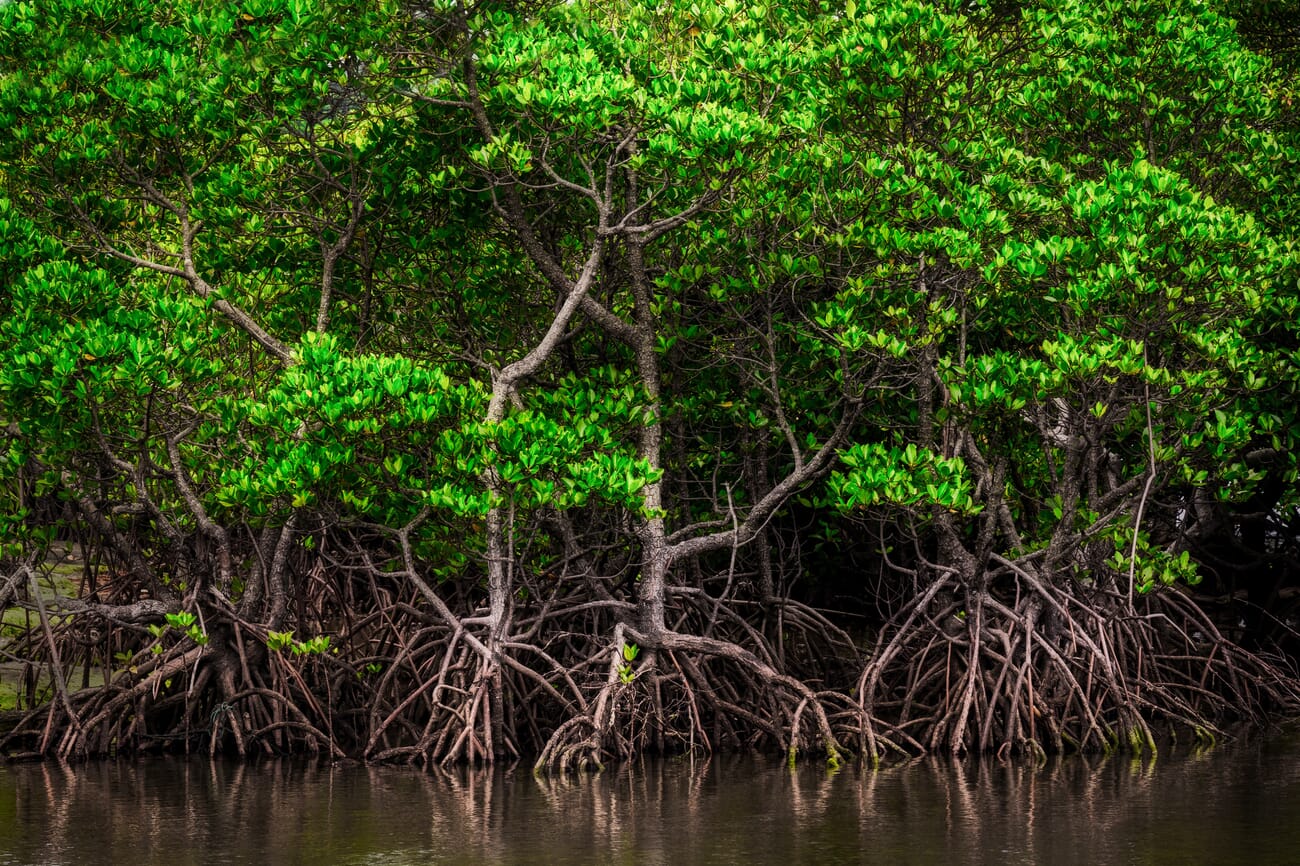 AUSTRALIA – Scientists with Australia’s Deakin University Blue Carbon Lab are kicking off a trial with biodegradable structures that could enhance the growth and survival of coastal wetland species like mangroves and sea grass as part of restoration work in Pork Phillip Bay and Western Port Bay. The structures, made from potato starch, provide seedlings with protection from high-energy environments without limiting their growth. They break down over time, making way for the established plants to thrive. Coastal wetlands, such as mangrove forests and saltmarshes, provide many benefits including protection from storm surges, and habitat for coastal wildlife. They also store atmospheric carbon, acting as a nature-based solution against climate change. However, coastal wetlands have been degraded and lost around the world and restoring them can be challenging. Dr Stacey Trevathan-Tackett of Deakin University’s Blue Carbon Lab says that restoration efforts can be hampered by harsh environmental conditions that damage wetland plants at crucial early stages of their growth – making it important to constantly develop new methods to encourage growth. “We are exploring new ways to help improve the success of restoration and recovery of wetlands,” Dr Trevathan-Tackett said in a press release. “This includes trialling new and creative techniques in different habitats and conditions, as well as working with local communities along the way.” AUSTRALIA – Scientists with Australia’s Deakin University Blue Carbon Lab are kicking off a trial with biodegradable structures that could enhance the growth and survival of coastal wetland species like mangroves and sea grass as part of restoration work in Pork Phillip Bay and Western Port Bay. The structures, made from potato starch, provide seedlings with protection from high-energy environments without limiting their growth. They break down over time, making way for the established plants to thrive. Coastal wetlands, such as mangrove forests and saltmarshes, provide many benefits including protection from storm surges, and habitat for coastal wildlife. They also store atmospheric carbon, acting as a nature-based solution against climate change. However, coastal wetlands have been degraded and lost around the world and restoring them can be challenging. Dr Stacey Trevathan-Tackett of Deakin University’s Blue Carbon Lab says that restoration efforts can be hampered by harsh environmental conditions that damage wetland plants at crucial early stages of their growth – making it important to constantly develop new methods to encourage growth. “We are exploring new ways to help improve the success of restoration and recovery of wetlands,” Dr Trevathan-Tackett said in a press release. “This includes trialling new and creative techniques in different habitats and conditions, as well as working with local communities along the way.” Pease consider donating to MAP to keep it going. *Articles in this newsletter may mention practices being used and/or show exagerated results being claimed without proof. Stories are presented here in effort to show mangrove related activity around the world and do not necessarily reflect Mangrove Action Project’s views or mangrove restoration best-practices. NOTICEChildrens Art Calendars 2023 ORDER YOURS HERE
ACTION ALERTSDON’T LET THE PACIFIC ISLANDS SINK!Climate change is drowning the Pacific Islands. Join the urgent call from the Prime Minister of Tuvalu and sign with your email address: CLICK HERE Do not sacrifice Congo’s rainforests to the oil industry! TAKE ACTION TAKE MAP SURVEY Please see the survey questionnaire we at MAP put together to discover where the shrimp industry is still having major adverse effects on mangroves and local communities. Stop the Dredging – 6.7 million cubic meters of sand from the Addu atoll basin will destroy nature, biodiversity and the natural defences and resilience of this UNESCO Biosphere Reserve. SIGN THE PETITION Keep fossil fuels out of Bangladesh for the health and wellbeing of the local communities, the beautiful regional beaches and forests, the Bangladeshi economy, and our shared climate. SIGN PETITION Stop this total madness Stop the biggest heated oil pipeline in the world — right through the heart of Africa! Like this newsletter? Pease consider donating to MAP to keep it going. Giving could never be easier MAP Website en Español 13 Year old Linda Li “Mangrove Adventure” from Kid Dream Art School
Video: Mangroves for the Future WANT TO GET INVOLVED?
Interested in connecting or working with MAP? Check out our opportunities here MANGROVE ISSUES Want to learn more about mangroves? What is CBEMR? Download MAP’s 2 page CBEMR Information Sheet containing links to all MAP’s CBEMR resources – CLICK HERE View MAP’s uploaded Videos at Question Your Shrimp Consumer/Markets Campaign! Mangroves: Guidebook to Malaysia – Click Here SHARE MAP’S VISION Our short documentary, Reducing the Risk of Disaster through Nature-Based Solutions : Mangroves NASA Study Maps the Roots of Global Mangrove Loss Marvellous Mangroves Curriculum The Marvellous Mangroves Curriculum begins with a simple philosophy – getting future generations to not only learn about, but understand the importance of mangrove forests. VISIT Marvellous Mangroves Curriculum in Bangladesh – WATCH VIDEO
Like this newsletter? Pease consider donating to MAP to keep it going. Giving could never be easier *Articles in this newsletter may mention practices being used and/or show exagerated results being claimed without proof. Stories are presented here in effort to show mangrove related activity around the world and do not necessarily reflect Mangrove Action Project’s views or mangrove restoration best-practices. | |
Mangrove Action Project Click here to view past newsletters
| |


 TANZANIA – Dr Amani Ngusaru, the country director for the World Wide Fund for Nature (WWF), said at the opening ceremony that the forests are an important component of the marine ecosystem. Marine conservation experts in the region are scratching their heads on how to protect the mangrove ecosystem of the western Indian Ocean region, he said, affirming that enhanced governance and management of mangrove forests was a major requirement. Threats to the ecosystem arise from natural trends like rising sea levels and certain economic activities, he told the experts meeting under the Western Indian Ocean Mangrove Network (WIOMN). They come from institutions in Tanzania, Kenya, Mozambique, South Africa, Madagascar, Somalia, the Comoros, Mauritius and the Seychelles. Occasional threats on mangrove threats include floods as they result in water-level alteration, bank erosion, and diversion of water courses. There is also sand deposition from sea and land that cuts off portions of mangrove forests from salt water even with sea-level rise as a result of global warming, he said. “Marine life is not complete without sea grasses, mangroves and reefs because creatures like fish live, eat and reproduce in such features. Therefore without proper management, the coastal ecosystem will be dead,” he said.Tanzania’s sea mangroves are legally protected though there are challenges threatening their sustainability, including human activities that are now being controlled, the director noted.
TANZANIA – Dr Amani Ngusaru, the country director for the World Wide Fund for Nature (WWF), said at the opening ceremony that the forests are an important component of the marine ecosystem. Marine conservation experts in the region are scratching their heads on how to protect the mangrove ecosystem of the western Indian Ocean region, he said, affirming that enhanced governance and management of mangrove forests was a major requirement. Threats to the ecosystem arise from natural trends like rising sea levels and certain economic activities, he told the experts meeting under the Western Indian Ocean Mangrove Network (WIOMN). They come from institutions in Tanzania, Kenya, Mozambique, South Africa, Madagascar, Somalia, the Comoros, Mauritius and the Seychelles. Occasional threats on mangrove threats include floods as they result in water-level alteration, bank erosion, and diversion of water courses. There is also sand deposition from sea and land that cuts off portions of mangrove forests from salt water even with sea-level rise as a result of global warming, he said. “Marine life is not complete without sea grasses, mangroves and reefs because creatures like fish live, eat and reproduce in such features. Therefore without proper management, the coastal ecosystem will be dead,” he said.Tanzania’s sea mangroves are legally protected though there are challenges threatening their sustainability, including human activities that are now being controlled, the director noted. NORTH AMERICA – Today, The Nature Conservancy (TNC), in collaboration with AXA XL, CINVESTAV-Merida, the University of California Santa Cruz, and Builders Initiative Foundation— published the final of three reports that assess the feasibility of mangrove insurance policies in The Bahamas, Florida, and Mexico. This final report builds on previous research that showed these locations have some of the largest areas of mangroves that would be cost-effective to restore for their flood risk reduction benefits. The report identifies nine specific locations—three in Mexico, four in Florida, and two in The Bahamas—as potential sites for mangrove insurance pilot projects. These locations were identified based on the presence of large areas of mangroves, the high protective value of mangroves, and strong interest from key stakeholders.“Mangroves are cornerstones of climate resilience for coastal communities – they serve as an important source of risk reduction and provide sustenance and livelihood co-benefits along with carbon sequestration,” said Daniel Morchain, TNC’s Global Climate Adaptation Director. “Given the alarming rate of mangrove loss worldwide, a viable solution is needed to finance mangrove restoration and protection. We are optimistic about the potential for establishing mangrove insurance policies in locations where mangroves buffer communities from the impacts of storms, support the health and well-being of local communities, and capture and store carbon to mitigate the impacts of climate change.”
NORTH AMERICA – Today, The Nature Conservancy (TNC), in collaboration with AXA XL, CINVESTAV-Merida, the University of California Santa Cruz, and Builders Initiative Foundation— published the final of three reports that assess the feasibility of mangrove insurance policies in The Bahamas, Florida, and Mexico. This final report builds on previous research that showed these locations have some of the largest areas of mangroves that would be cost-effective to restore for their flood risk reduction benefits. The report identifies nine specific locations—three in Mexico, four in Florida, and two in The Bahamas—as potential sites for mangrove insurance pilot projects. These locations were identified based on the presence of large areas of mangroves, the high protective value of mangroves, and strong interest from key stakeholders.“Mangroves are cornerstones of climate resilience for coastal communities – they serve as an important source of risk reduction and provide sustenance and livelihood co-benefits along with carbon sequestration,” said Daniel Morchain, TNC’s Global Climate Adaptation Director. “Given the alarming rate of mangrove loss worldwide, a viable solution is needed to finance mangrove restoration and protection. We are optimistic about the potential for establishing mangrove insurance policies in locations where mangroves buffer communities from the impacts of storms, support the health and well-being of local communities, and capture and store carbon to mitigate the impacts of climate change.”

